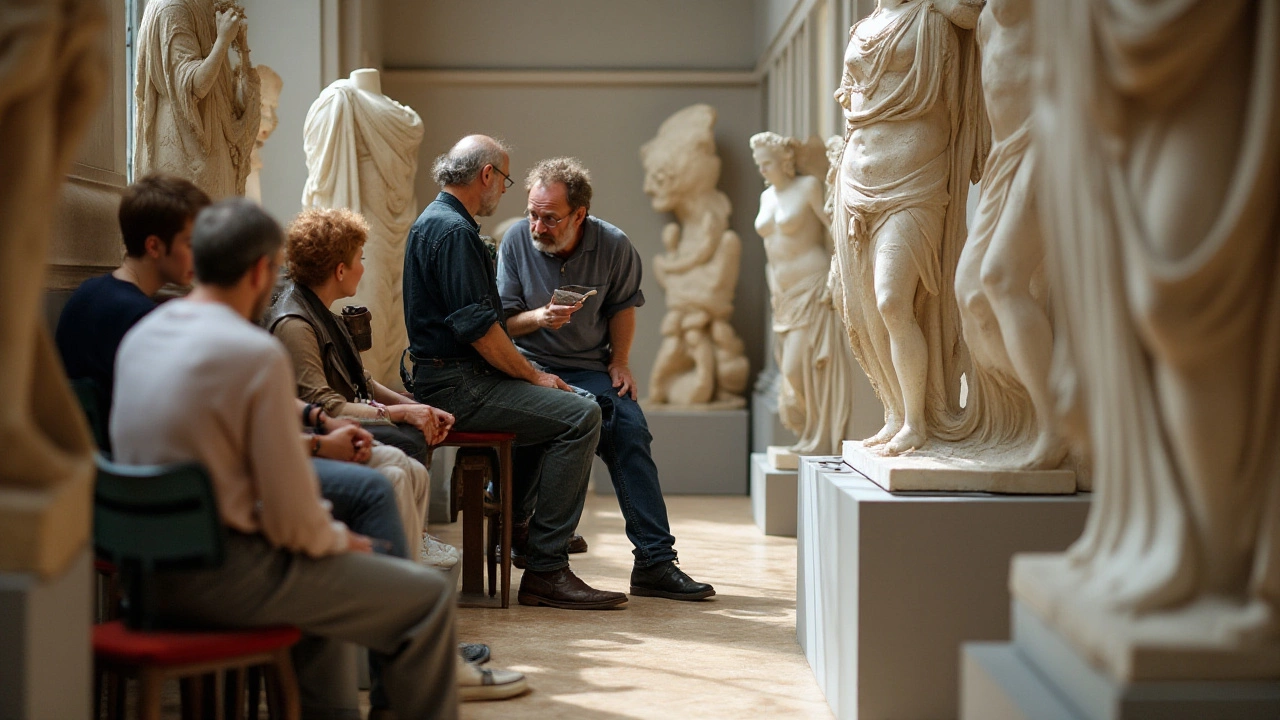Famous Sculptors Who Changed Art
If you’ve ever stood in front of a massive statue and felt a little awe, you’re probably looking at the work of a famous sculptor. These artists turn raw stone, wood, or metal into pieces that hold up for centuries. Knowing who they are and what they made can spark ideas for your own projects, whether you’re just starting out or you’ve been sculpting for years.
Iconic Sculptors and Their Signature Pieces
Michelangelo is the first name that pops up for many people. His Pieta and the marble figures on the Sistine Chapel ceiling show how he could make stone look soft. Then there’s Auguste Rodin, the guy behind The Thinker. He used rough surfaces to give his bronzes a feeling of movement. Henry Moore took a different route, focusing on abstract, rounded forms that look like huge stones you might find on a beach. His Reclining Figure pieces are still a big inspiration for modern artists.
Don’t forget about contemporary names like Anish Kapoor, who loves big, shiny surfaces. His Cloud Gate in Chicago (the mirror‑like bean) makes the sky and city look like one big sculpture. And if you love something more playful, look at the work of Jeff Koons. He takes everyday objects, turns them into giant stainless‑steel sculptures, and adds a glossy finish that makes them sparkle.
What You Can Learn From Their Techniques
One thing all these sculptors share is a strong sense of shape. They spend hours figuring out the right proportions before they ever chip away. For beginners, that means starting with simple forms—think basic cubes or cylinders—before moving to complex figures. Our guide on "Easiest Sculptures for Beginners" shows how breaking a big idea into small steps can keep the process fun.
Another tip is material choice. Michelangelo used marble because it could hold fine details, while Rodin preferred bronze for its ability to capture texture. If you’re on a budget, check out our "Cheapest Materials for Sculpture" post. Everyday items like plaster, recycled wood, or even hardened clay can give you a solid start without breaking the bank.
Finally, look at how these artists think about space. A statue isn’t just an object; it interacts with the area around it. Moore’s outdoor pieces often sit in open fields, letting viewers walk around them. When you plan your own work, walk a few steps back and see how light and shadows change the piece. That little habit can turn a plain shape into a dynamic experience.
Whether you’re aiming to carve a marble bust or throw a simple clay pot, learning from famous sculptors gives you a roadmap. Study their sketches, watch how they handle tools, and experiment with the materials they loved. The next time you see a towering statue, you’ll spot the same choices they made, and you’ll be ready to make your own mark in the world of sculpture.

6 Nov 2024
The question of who reigns as the best sculptor of all time is one that may stir debate across generations. While different eras have their acclaimed art figures, the criteria such as innovation, technique, and influence help evaluate their contributions. This article explores historical and contemporary sculptors, examining their achievements and their profound impact on the world of art. From classical masterpieces to avant-garde creations, discover the enchanting stories behind some of history's most illustrious sculptors.
Continue reading...
